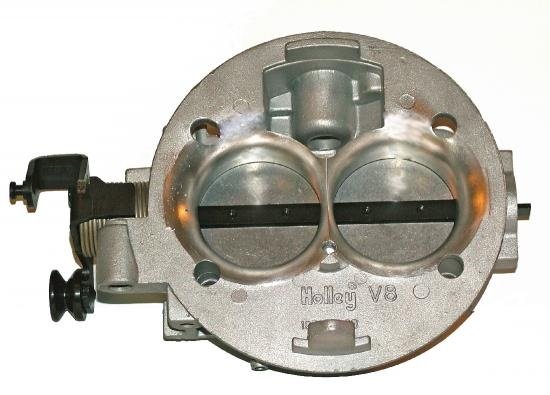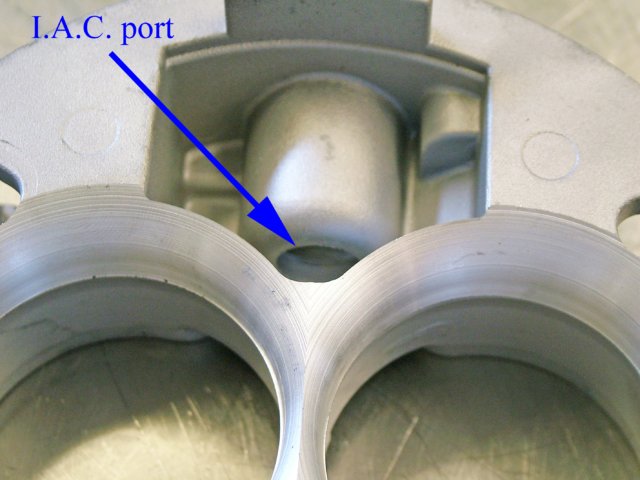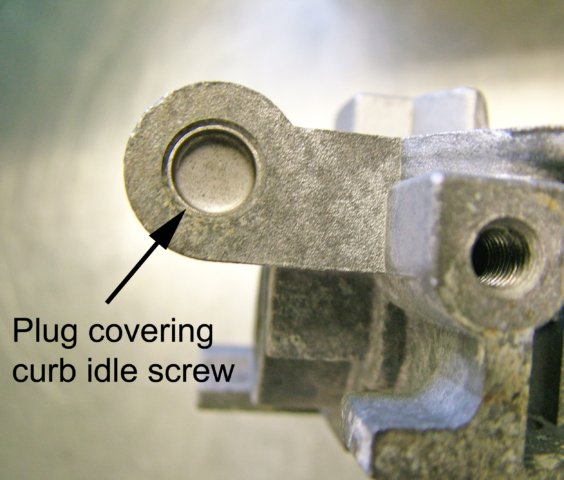 Displacing the carburetor’s perch atop a great many intake manifolds, the injector-less throttle body was a necessary and natural progression in electronic fuel injection’s rise to power. As little more than a glorified butterfly valve, it’s a simple yet scrupulous meter for air entering an engine.
Displacing the carburetor’s perch atop a great many intake manifolds, the injector-less throttle body was a necessary and natural progression in electronic fuel injection’s rise to power. As little more than a glorified butterfly valve, it’s a simple yet scrupulous meter for air entering an engine.
Most Dodge Magnum motors used some variety of a “two-barrel” throttle body that can be a little finicky if not installed whilst holding one’s mouth just right. Hughes Engines, the Magnum experts, has a few tips to troubleshoot yours if it goes on the fritz.

Sometimes when a throttle body is installed a fast idle condition may occur. Try these tests to determine what is causing the trouble.
Disconnect both the throttle cable and transmission linkages to be sure they are not holding the throttle open. Now, with the engine running & the linkage disconnected, open the throttle and let the return spring bring the throttle linkage back to idle a few times. If the engine idles down properly the problem is in the linkage, not the throttle body. If it still idles high, proceed to step #2.
Sometimes the idle air control valve (I.A.C.) does not close all the way. Here is a way to check it. Remove the air hat from the throttle body. Start the engine. Now, with the engine idling fast plug the I.A.C. port with your finger (See photo #1 below). This is located directly behind the throttle bores as shown in the photo below. If the idle speed drops back down to a more normal level your I.A.C. valve is not closing completely.
Figure why it is not closing and replace the valve if necessary. This problem is often misdiagnosed as the throttle plates being open to far. This is rarely the case. the throttle plates cannot be completely closed because of their design.If an attempt is made to close the throttle plates more than stock, they will jam in the bores and then you will not be happy. Leave the curb idle screw alone (See photo #2 below).
Note: Keep in mind that when we modify throttle bodies here at our shop that we remove a portion of the venturi ring above the throttle plates. This allows your line of sight to more easily detect the light showing around the throttle plates and the gaps will appear to be larger than they did in your stock throttle body.We do not remove any material in the throttle bore area and we use the original throttle plates.
We have received reports of customers buying as many as 2 new TPS (throttle position sensors) that were defective and allowed the throttle plates to close but still signaled the ECU to richen the fuel mixture, which caused the idle to be high and fluctuate at idle rpm.














 Mopar Connection Magazine – The ONLY Daily Mopar Magazine © 2022. All Rights Reserved. Mopar Connection Magazine is the ONLY daily Mopar Magazine bringing you the latest Mopar news, technology, breaking news, and Mopar related events and articles. Find out the latest information about Mopar, Mopar products and services, stay up to date on Mopar enthusiast news, dealership information and the latest Mopar social media buzz! Sign up for the Mopar Connection Magazine newsletter for the latest information about new products, services and industry chatter. Mopar Connection Magazine is the best and only source you need to be a Mopar industry insider!
Mopar Connection Magazine – The ONLY Daily Mopar Magazine © 2022. All Rights Reserved. Mopar Connection Magazine is the ONLY daily Mopar Magazine bringing you the latest Mopar news, technology, breaking news, and Mopar related events and articles. Find out the latest information about Mopar, Mopar products and services, stay up to date on Mopar enthusiast news, dealership information and the latest Mopar social media buzz! Sign up for the Mopar Connection Magazine newsletter for the latest information about new products, services and industry chatter. Mopar Connection Magazine is the best and only source you need to be a Mopar industry insider! by
by